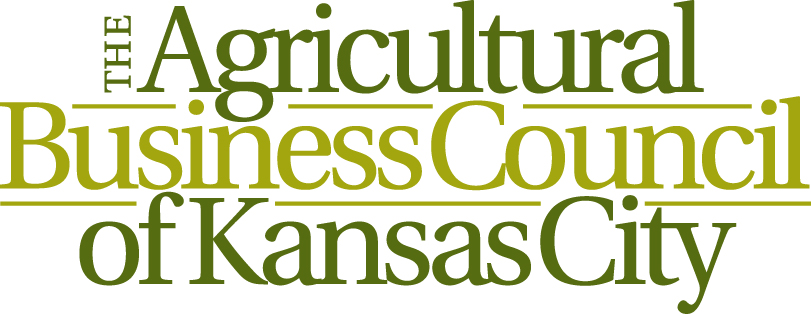ASA Plots a Wide Course of Action
/American Soybean Association CEO Steve Censky offered Kansas City Agricultural Business Council members a sweeping overview of ASA’s plans and strategy. He also accented his presentation with some pointed remarks. For example, he stressed that ASA continues to aggressively oppose and push for the removal of anti-dumping and countervailing duties on imports of critical inputs. “These tariffs have led to extreme price increases which are impacting U.S. growers.” Censky curtly described the current sentiment inside the Beltway regarding trade in general and agricultural trade in particular: “It’s not in the cards.”
Commenting on the Securities and Exchange Commission’s proposal requiring public companies to report Scope 3 GHG emissions (indirect emissions that occur in a company’s supply and value chain), Censky said his group met with SEC rule makers to explain how such policy would be unhelpful in the campaign against climate change. Especially for farmers. He told them that farmers are willing and able to implement programs for sustainable conservation, but accounting for emissions along their supply chain would impose harsh, expensive record keeping rules on them. After ASA had detailed the situation from an agricultural perspective, one SEC regulator responded, “We never thought of that.” Censky also noted that ag industry leaders need to draw a larger picture of the economic dynamics of their sectors so regulators can better understand the consequences their actions can bring down on businesses.
Speaking of Trade
As global demand for U.S. soybean oil grows, Censky said, American soy processors are building new plants to keep up with the orders. New crush capacity is expected to grow by a stunning 25% over the next several years. New crush technology will create additional supplies of soy meal protein which will be a competitive alternative for domestic livestock feeders. A full buildout of the announced plants would increase soybean meal production by about one-third. While this additional capacity will provide meal for domestic livestock consumption at a competitive price, much of it is also expected to be exported as well.
[Editorial note: The 25% increase in domestic crush capacity will be obtained from 18 facilities, according to Scott Gerlt, ASA chief economist. “Some of these will be new while others will be expansions of existing plants,” he said. “The development will take place over the next several years. The crushing industry is investing billions of dollars in expanding domestic capacity.” Gerlt explained further that the rise of renewable diesel is fueling the crush plant expansion. “Renewable diesel can be used as a drop-in fuel as it has the same chemistry as petroleum-based diesel. While renewable diesel can be produced from many things, soybean oil is expected to be one of the principal feedstocks. This oncoming demand is spurring the additional crush plant investment. In fact, some of the facilities are part of joint ventures between crushers and renewable fuel producers. This results in a higher soybean price for farmers, lower soybean meal costs for livestock producers and more low-carbon fuels.”]
Inflation Reduction Act
As for his assessment of the newly enacted Inflation Reduction Act of 2022, Censky said there are many items in the reconciliation bill that will be good for agriculture, including provisions regarding biofuels, conservation, and taxes. Noting that IRA was passed along strictly partisan, he said, ASA has taken a neutral position as it digests the details of the legislation. There are good things in it, he said, such as no negative taxes for ag. “And it also did not do away with step-up in basis for land valuation.”
Farm Bill On The Horizon
While direct in his cautions about what ASA considers some of the short-sightings in Washington’s policy making, Censky is optimistic about the potential for the upcoming Farm Bill. He is hoping the Bill will contain provisions to improve the farm safety net for soybeans with improved crop insurance. ASA supports enhanced accessibility of conservation programs that allow farmers to keep their voluntary, incentive-based approach in place. Censky said the Farm Bill should provide greater investment in the promotion of U.S. commodities globally and build opportunities for biofuels and bio-based products.
As Censky put it, “A Key Ask” from the ag industry of Farm Bill law makers is: Grow the Size of the Pie. ASA is calling for greater financial allocations in the Farm Bill for food programs and for greater support for the work of food/humanitarian groups like Feed America, Harvesters and SNAP. Censky stressed it is important to include and keep these programs as part of the Farm Bill along with traditional farm programs. He explained that keeping food programs in the Farm Bill ensured their survival and enactment into law, so people in need can continue to receive the assistance. Practically speaking, Censky explained if nutrition and other traditional farm programs beneficial to rural constituents remain in the Farm Bill, they will receive support from urban lawmakers. There simply are not enough farm votes alone in Congress to pass a Farm Bill. “We need the urban votes, too; this is a historic coalition of interests that is important to preserve.” He added, “Feeding people is a good thing, and a good thing for ag.”


